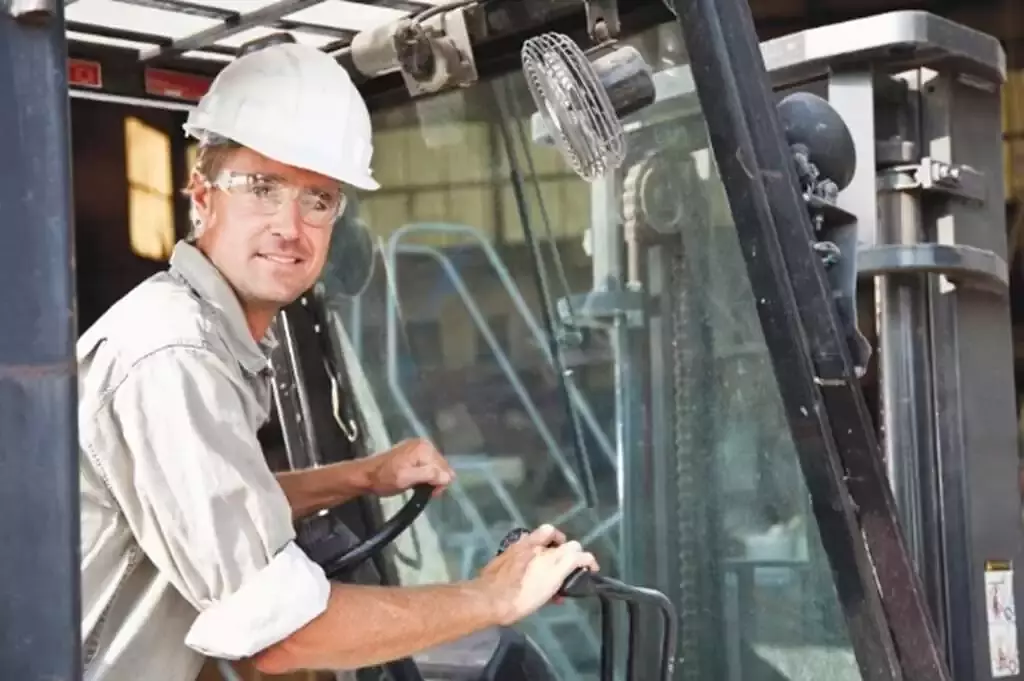 Every product we own as consumers has been on a forklift at some point in its lifecycle and we owe much to the many certified forklift operators worldwide for their expertise in handling those materials.
Every product we own as consumers has been on a forklift at some point in its lifecycle and we owe much to the many certified forklift operators worldwide for their expertise in handling those materials.
Tips for productivity.
The amount of time a forklift operator spends behind the wheel of a forklift can drastically affect their physical and well-being. So, when purchasing a forklift or deciding which to buy here are some very important key factors to consider. These will help to ensure that each operator is able to get through an entire shift as comfortably as possible.
The seat. A forklift seat is the most contact you’ll have when operating a forklift so make sure to ensure there is adequate cushion and quality suspension.
Stability inside a cage. Easy access in and out of a forklift cage can make all the difference in reducing the amount of fatigue an operator endures. A set of treads for an operator’s feet can provide much needed stability when working within that space.
User-friendly controls. Forklift training is always necessary when it comes to understanding their controls. Besides the training, the controls themselves should function with ease. Modern tech has made sure that forklift joysticks are easy to maneuver and access. Make sure you purchase one that meets those standards.
“The amount of time a forklift operator spends behind the wheel of a forklift can drastically affect their physical and well-being.”
Spacious enough. Space within a forklift driver’s seat should be enough to fit a person of XL size or larger. This will ensure ample space and comfortability while an operator is working.
Suspension. Your forklifts must have tires and suspension to match the terrain your it will be used on.
Once you select your forklift or fleet of forklifts, employers should be checking in with their operators, on a regular basis, to ensure their operator’s ergonomics have not been affected.
Tips for newly hired forklift operators.
It’s not uncommon to have a crew of forklift operators with varying degrees of operator experience. Training on the job is almost always required regardless. When an employer offers training on the job, he must make every effort, for his benefit as well as the employee, to cover as wide a scope of work as possible for his warehouse needs.
 Below are a few topics to cover while training new operators.
Below are a few topics to cover while training new operators.
Make sure operators are more than proficient in operating their specific forklift before letting them take over, unsupervised. The risk to all employees is at stake when an untrained operator is behind the wheel. A manager makes the decision when an employee is ready, not the operator.
Safety should be always stressed, especially during training. Teach operators how handle daily maintenance of the equipment, how to operate at full speed, adjust settings when necessary and how to handle unexpected situations.
Lead by example. Have one of your seasoned forklift operators be apart of new employee training. Current employees will most likely volunteer as their firsthand experience in that warehouse will benefit all personnel.
Tips for avoiding forklift accidents and what you should know about material-handling.
The most common forklift accidents are tipping your forklift or dropping the material you are handling. Both are incredibly dangerous accidents that can result in injury.
Here are some very simple and easy precautions to take in avoiding potential accidents while operating your forklift.
First, watch your speed and braking. This type of operation can cause injury, fatigue and loss of your load. Second, always do a pre-shift inspection on the equipment you will be operating. Check your tires, your controls, your settings and the smoothness of your drive and lift.
Third, use the three-points of contact rule while getting in and out of your forklift seat. When you get in or out always face the cab and have three points in which you are mounting or dismounting the seat.
Finally, take breaks or rotate warehouse tasks. It is healthy to switch tasks for a period, when you can. This can offer relief from those tasks that require too much standing or too much sitting.
